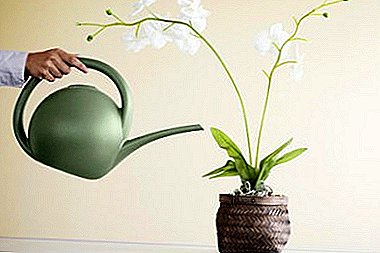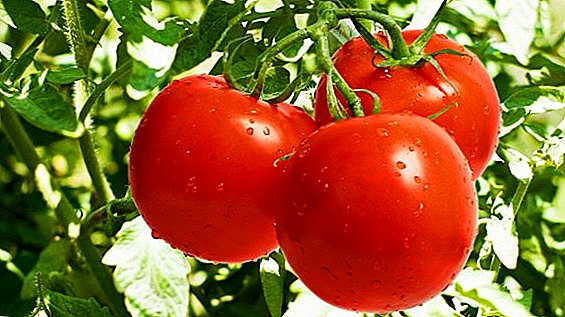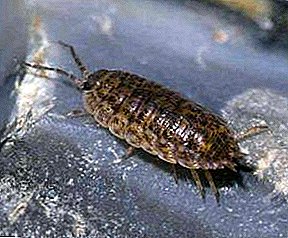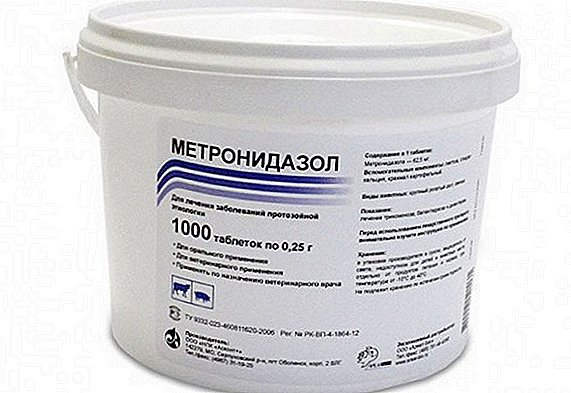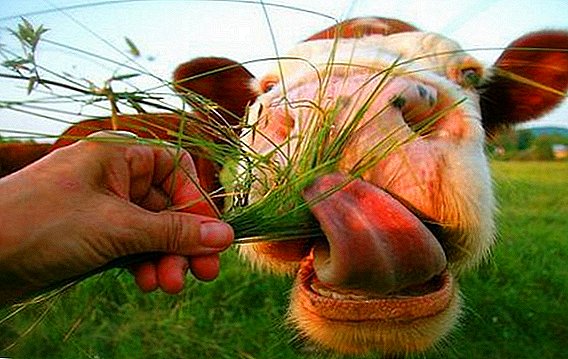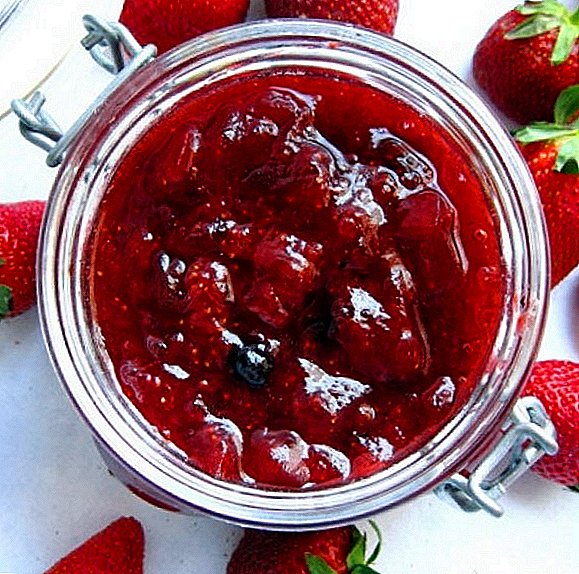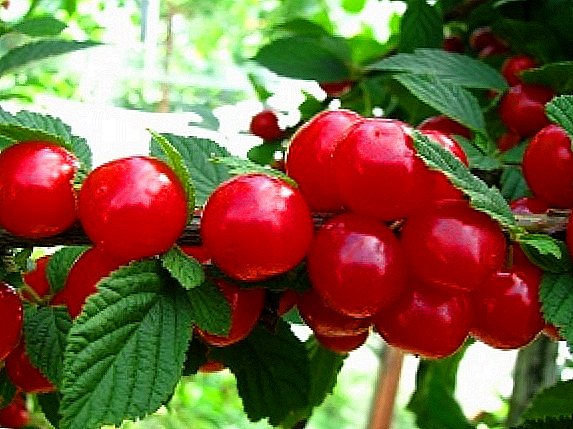
The name "felted cherry" sounds a bit unusual. It seems like a cherry, but some kind is not the one that we usually mean and imagine when we hear this word.
What are its differences from the usual, and how is it good? Why is it that she, many gardeners - lovers prefer? This is what we will try to find out in this article.
What are the advantages of felt cherries?
Well, firstly, like any other cherry, felt cherry is unusually beautiful during the flowering period and is able to decorate any garden with its appearance.
Secondly, her fruits are unusually tasty, juicy, sweet, but with a slight sourness, with a wonderful aroma. In addition, the berries are rich in polysaccharides, nutrients, vitamin C and pectins, and they, in turn, have a beneficial effect on the human cardiovascular system, contribute to improved work of the digestive system.
Also, the advantages include a number of such features: the cherry begins to bear fruit in the second year, yield wherein very high, with proper care, the bush is abundantly covered with berries that will delight with their taste for quite a long period.
In addition, the tree is not particularly capricious, quite resistant to drought and frost and is not afraid of coccomycosis. Oh, how many advantages of our cherry! And, really, absolutely no cons? - you ask. Well, without them.
Now about the shortcomings
Be sure to know that felt cherries belong to samobedplodny varietiesbut because there is a need to plant other varieties next to it, otherwise do not expect a harvest. If you do not cut the bush, then it will thicken greatly, and in general the tree quickly grows old (about 10 years).
We mentioned above that cherry is not susceptible to coccomycosisBut moniliozu it is exposed very often. Another significant disadvantage is that berries are not subject to long transportation and storage due to the ability to deteriorate quickly.
Help: What is selflessness
Practice shows that numerous amateur gardeners often do not understand which variety is self-fertile and which one is not.
Self-fertility is the ability of a particular variety to reproduce itself, i.e. pollinate yourself
As a result, acquiring one sort, for example, cherries, there is a high probability that the fruit will never be obtained, even if the plant is properly planted and cared for.
Cause? A common thing among cross-pollinated plants is that a flower sets fruit when pollen comes from a flower of just another variety of the same species. When an identical variety of pollen falls on a pestle - fertilization does not happen, the fruits, respectively, are not tied.
Such varieties are called samobzoplodnymi, and they are quite a lot, this is most of the varieties of apple trees, pears, plums, the same cherry, honeysuckle, some varieties of gooseberry, apricot, mountain ash, currants.
Should say that self-infertility is not so strong disadvantage, just don’t forget about it, and plant at least 2 varieties nearby. Well, if, simply there is no need for such a quantity of fruits, only self-bearing plants should be planted. They are few, but there is a choice, and you can choose the right one. When buying, read carefully the description of the variety, this property should be indicated.
Also, take into account that self-fruited varieties self-pollinating form fruits on 15-40% of flowers (highly self-fruited by 50%), but if another variety of the same species grows nearby, this will significantly increase the yield, even if it is a self-fruiting variety.
Now tell about the varieties of felt cherries

The variety of felt cherry varieties is quite high. The most popular among gardeners is the cherry variety - Natalie. Its productivity reaches 8 kg from a bush. This variety belongs to mid-season varieties.
This also includes such varieties as Fairy Tale, Tsarevna. Delight and Alice, as well as Children's cherry - belong to the early varieties.
By the late varieties belong Altana, Summer, Beauty.
So, above we have considered all the pros and cons of our tree, highlighting the first and second. But what is to be done to ensure that the flowering tree is pleasing to the eye in the spring, and the fruit allowed to enjoy their taste in the summer? How to plant and care for cherries? About this we will talk further.
Go to planting a tree
What are the landing dates?
Carry out planting felted cherries in the fall or spring. If the seedlings came to you later, then they should be prikopat until spring. Preference should be given 1-2 summer seedlings. Before planting, it is advisable to cut them by 20 centimeters, for better development of lateral roots.
How to choose a place
Getting to the place selection, you need to take into account the fact that the tree does not like damp places and lowlandswhere water stagnates. Therefore, the place you need to choose sunny.
The soil is loamy, but if it is too heavy, then it is necessary to introduce sand.
Do not do without organic and phosphorus - potash fertilizers. Landing scheme on the garden plots - 2 × 1 m.
It is also interesting to read about the variety of cherries "Youth"
Pit and planting cherries
When planting, we dig a hole about one and a half meters deep and with the same diameter, lay the prepared soil mixture, 10-15 kg of humus, 20 grams of potassium salt and 50 grams of superphosphate there. We put a sapling into the pit, fill it with soil mixture, compact it and fill it with 5-10 liters of water.
In order to be required in the future less watering - can grind the ground with peat. During the growing season you need to produce at least two waterings. It will be useful to mention that the reproduction of felt cherries occurs not only by seedlings, but also by layering, cuttings and stones.
There is also an important care
Fertilizer and tillage
According to the recommendations, it is better to start fertilizing the tree two years after it was planted. In the springafter the tree stops blooming, to feed complex mineral fertilizerthat must contain nitrogen.
But in the autumn period of time, on the contrary, its content should be excluded, since this will provoke an enhanced growth of shoots and they will freeze during frosts. Loosen up soil needed carefully, so as not to damage the seedlings of felt cherries, not exceeding 4-5 cm in depth.
Cutting and watering felt cherries

For more intensive growth and a bountiful harvest, you need to follow the crown of the tree. Crop branches need annually, doing it in early spring, removing old, diseased and poorly located branches. It is enough to leave 5-7 strong shoots, except the central one.
From the second year we cut off all lateral branches to the third part. As practice shows, the bush, which is cared for and carried out proper sanitary and regulatory pruning - gives yields much higher than neglected and abandoned trees
Water need cherry moderately, because above we have emphasized that she does not like excess moisture. Take care of your plants with care and with love, and they will certainly thank you for a rich harvest and delight your eyes with an unusually beautiful flowering and fragrance.



